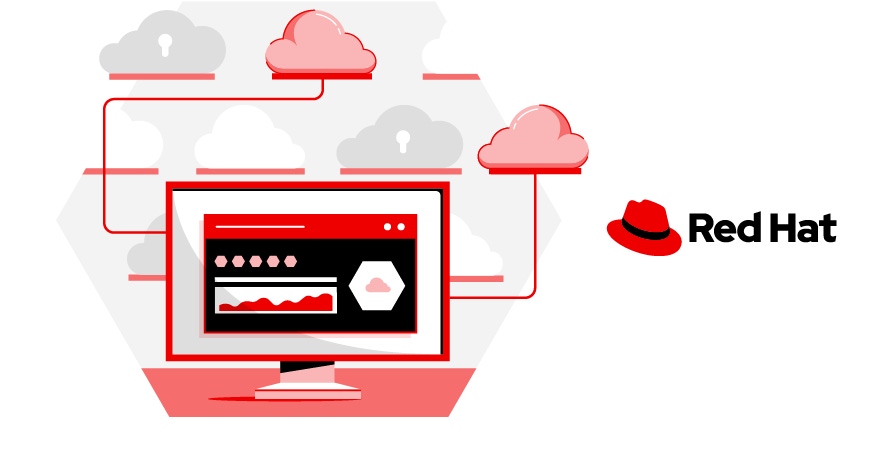Red Hat's RHEL 8.4 Release Targets Edge DeploymentsRed Hat's RHEL 8.4 Release Targets Edge Deployments
Unveiled at this year's Red Hat Summit, the latest version of Red Hat’s flagship enterprise offering, RHEL 8.4, features edge-focused improvements like enhanced container management, less reboots after an update and more.
April 27, 2021

This morning at the virtual Red Hat Summit, Red Hat unveiled version 8.4 of its flagship operating system to its online audience. Red Hat Enterprise Linux (RHEL) 8.4 offers a slew of features meant to cement Linux on the edge for any enterprises looking to expand their compute footprint.
For a company like parent company IBM, with its renewed focus on cloud computing and the hybrid cloud, subsidiary Red Hat’s focus on Linux on the edge is complementary: edge computing focuses on keeping the computing platform or device near an IoT device that produces data, and the hybrid cloud keeps data on private or public clouds as close to the source of the data being generated.
The edge is also where there's money to be made. In a recent Red Hat survey, 72% of respondents said they expected open source to drive adoption of edge computing over the next two years, and the most recent State of the Edge report from the Linux Foundation predicts that IoT and edge devices will produce 90 zettabytes of data by 2025.
"To Red Hat, this indicates that the importance of edge computing as a footprint of the open hybrid cloud will only grow in the years to come, making preparations for the rigors of edge computing a crucial need for CIOs and IT leaders," the company said in a statement.
The edge-focused improvements in RHEL 8.4 boil down to improved container management, improved installation management for bare metal, and a tool that reduces reboots after an update.
RHEL 8.4 upgraded Podman, the open standards-based container engine for management of containers across a hybrid environment. The new version is Podman 3.
"That allows us to do automatic container image updates," said Scott McBrien, a product manager with Red Hat. "With a little bit of system configuration, you can have the system check in with a registry and if there's a newer version of the container image available, go ahead and pull it down and possibly redeploy your containers with that. You don't have to do any manual work for that one; you can set it up to automatically happen."
RHEL 8.4 has also added support for Docker volumes for persistent container storage.
"If you have Docker containers, you can just replace it with Podman 3 and probably be good to go," McBrien said.
RHEL 8.4 also added functionality to Image Builder, Red Hat's tool for creating customized operating system images. Image Builder now lets users create installation media tailored for bare metal. This helps IT teams maintain a common foundation across disconnected edge environments.
There has also been an edge-focused improvement to Universal Base Image, which supplies RHEL-based container images. The images Universal Base Image makes available now includes Micro, which McBrien said weighs in at a tiny 20 to 40 megabytes.
"We were getting some feedback that our minimal image was too large, so we made Micro to address those concerns," McBrien said. "Because it has less software, there's less maintenance, and it potentially reduces your attack service. Also, because it's smaller it means that you're using less bandwidth, and it takes less time when you're transferring that image around to your container lists."
Tracer, a utility that has previously only been available in the Red Hat infrastructure management product Satellite, is included in RHEL 8.4. McBrien said that the feature can help IT teams avoid unnecessary reboots after an update.
"It used to be that when you applied updates with web console, it would just always ask you to reboot the system," McBrien said. "But when you apply an update to something like NginX and that's the only update you applied, you don't need to reboot the system, you just need to restart NginX. Tracer now looks at what updates you've applied, and kind of what they do, and then makes a better recommendation for what the post update activity should be."
He added that Tracer can also be run from a command line for those who don't generally work in a GUI.
In addition, Red Hat’s free-to-RHEL-subscribers service, Insight Subscriptions, is being expanded. The previous iteration found and notified RHEL subscribers of potential configuration issues or software conflicts before a support call becomes necessary; it now includes cloud- and edge-based applications. In addition, RHEL 8.4 ships with extended security capabilities, with RHEL System Role for Crypto Policies and Network-Bound Disk Encryption delivered as a container across distributed environments.
Red Hat says general availability is "in the coming weeks." Considering that RHEL has been on a strict six-month release cycle for a couple of years now, and that RHEL 8.3 became GA on November 3, we figure you'll be able to buy and drive 8.4 sometime around May 3.
About the Author
You May Also Like








.jpg?width=700&auto=webp&quality=80&disable=upscale)
